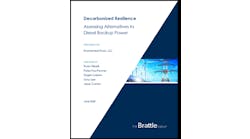This is the first entry in a Data Center Frontier series that explores the ins and outs of a data center infrastructure system, and how to tell if your company would benefit from a DCIM. This series, compiled in a complete Guide, also covers key DCIM functionality considerations, implementation and training, and moving beyond the physical aspects of a facility.
One of the major considerations that organizations need to examine and address before contemplating a DCIM solution is to assess their own organization’s existing departments and interdepartmental practices, procedures and pain points. Are some of the issues due to lack of visibility across the enterprise or are they due to the processes and viewpoints of the historically differing cultures of the operational and management domains? This also begs the questions: Which stakeholders will be making the evaluation and purchasing decisions, whose budget will pay for the DCIM solution, and which personnel will be responsible to administrate it?
To answer these questions, it is necessary to understand that the DCIM solutions currently available cover an extensive array of products with a wide range of features and functions. Conceptually, they are based on a centralized data repository that can deliver an integrated and interrelated view of all the assets and status of the physical facility infrastructure (space, power, cooling and network cabling), as well as IT systems (servers, storage, networking and even applications). Nonetheless, given the historically divergent cultures of IT and facilities, it should come as no surprise that politics play a significant role in DCIM purchase and management decisions.
[clickToTweet tweet=”Examine departments and interdepartmental practices, procedures and pain points before adopting a DCIM. #datacenters” quote=”Examine your departments and interdepartmental practices, procedures and pain points before adopting a DCIM. #datacenters”]
To determine if you are a candidate for a DCIM solution, you need to at a minimum, understand
what you are currently monitoring or measuring with your existing tools, what you are doing with that data today, and what you want to do with the data in the future. Be prepared to devote enough internal resources to the process of developing a list of issues, functions and key challenges that are relevant to your staff. Even if you have already spoken to some of the vendors and have a few preliminary semi- finalists, as a minimum you will still need to have your own checklist of priorities and their importance and expected cost payback.
To determine if you are a candidate for a DCIM solution, you need to at a minimum, understand what you are currently monitoring or measuring with your existing tools, what you are doing with that data today, and what you want to do with the data in the future.
A comprehensive DCIM solution is comprised of components that include Enterprise Class monitoring, complete inventory information, multiple ways to visualize and report on data, workflow management, and open integration capabilities. As you evaluate your situation, consider some of the most typically DCIM functions and benefits and determine if these align to your most critical to your data center and business needs. (See table below.)
- Key DCIM Functionality Considerations
- Implementation and Training
- Moving Beyond the Physical Aspects of a Facility
You can also download the complete report, “Data Center Management Infrastructure: Strategic Investment or Unnecessary Expense?,” courtesy of Sunbird.





